The origins of the Western classical music tradition can be found in the Medieval era. Lasting an incredible 900 years, it is often split into three mini-periods: the Early Medieval period (500-1150AD), the High Medieval period (1150-1300) and the Late Medieval period (1300-1400).
The Early Medieval period was dominated by religious vocal music, with plainsong or Gregorian chant the best known examples of this. But, later on, the rise of secular music and music for the purposes of entertainment coincided with the development of musical instruments. While modern versions of some of these are still used by 21st Century musicians, others fell out of favour and might look rather strange to contemporary observers!
Instrumental Categories in Medieval Music
In this article we’ll take a look at the main instruments that were played in the Medieval period.
For the sake of clarity we’ll organise them into modern instrumental families – woodwind, brass, strings and percussion.
But it is worth noting that, at the time, instruments would have been divided into two broad groups:
- haut, meaning loud
- bas, meaning soft
In general, haut instruments were suitable for playing outdoors, and would have included many of the wind instruments mentioned here: shawms, sackbuts, trumpets and so on.
Meanwhile, instruments that were suitable for indoor chamber music – the recorder and most string instruments – would have been part of the bas category.
Because very few original instrument specimens survive from Medieval times, historians have had to piece together information about the kinds of instruments that were played by looking carefully at art, texts and written music.
Medieval Woodwind Instruments
Recorder
Today the Recorder is often considered the ideal starter-instrument for younger children.
They are now generally made from plastic, whereas Medieval recorders were wooden, but otherwise they remain essentially the same, with a beak-style mouthpiece and eight finger holes.
Flute
Unlike the metal instruments we see today, Medieval Flutes would have been made from wood.
They would have had simple holes to be covered by the fingers, rather than the more complex systems of key-work we see today.
Bagpipes
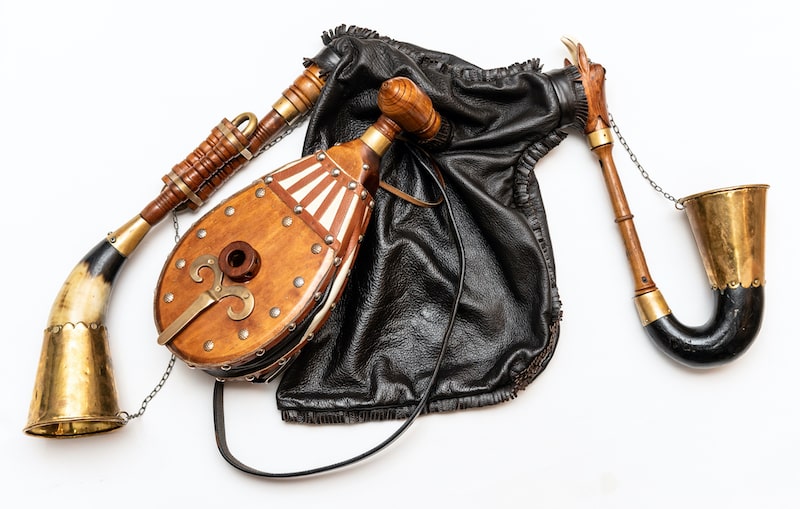
The loud, distinctive sound of the Bagpipes is now commonly associated with the Scottish Highlands, but the instrument has been played in countries around the world since ancient times.
Early Medieval bagpipes would have comprised a bag made from goat or sheep skin, plus a reed pipe, then in the 13th Century an extra drone pipe was added to provide a non-stop droning single note, above which the melody would sound.
Bagpipes could be played alone but were often paired with a Shawm (which we’ll look at shortly).
Simple Medieval bagpipes are sometimes known as Bladder Pipes.
Pipe and Tabor
The pipe was a simple woodwind instrument with just three holes.
It was designed to be played with just one hand, so that the other could play a tabor drum, a kind of portable snare drum, or another small percussion instrument.
Flageolet

A close relative of the recorder, the Flageolet was a whistle-like instrument that was popular with amateur musicians until they disappeared from use in the 19th Century.
They were very similar to recorders except they often had two thumbholes, while recorders just have one.
Shawm
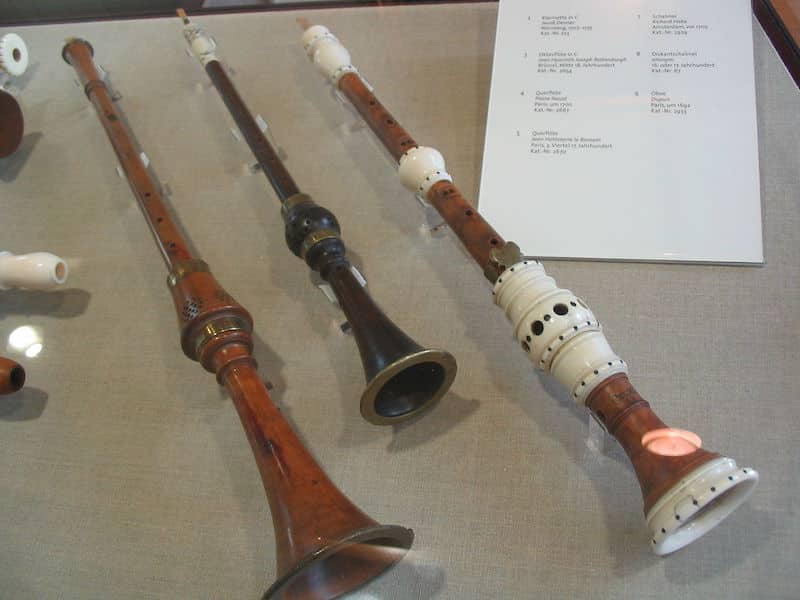
The Shawm is a type of double-reed woodwind instrument and a predecessor of the modern day oboe.
It has a piercing, trumpet-like sound, so was typically used for outdoor performances.
Although it was used in medieval period it also was one of the most popular woodwind instrument of the renaissance era.
Medieval Brass Instruments
Trumpet
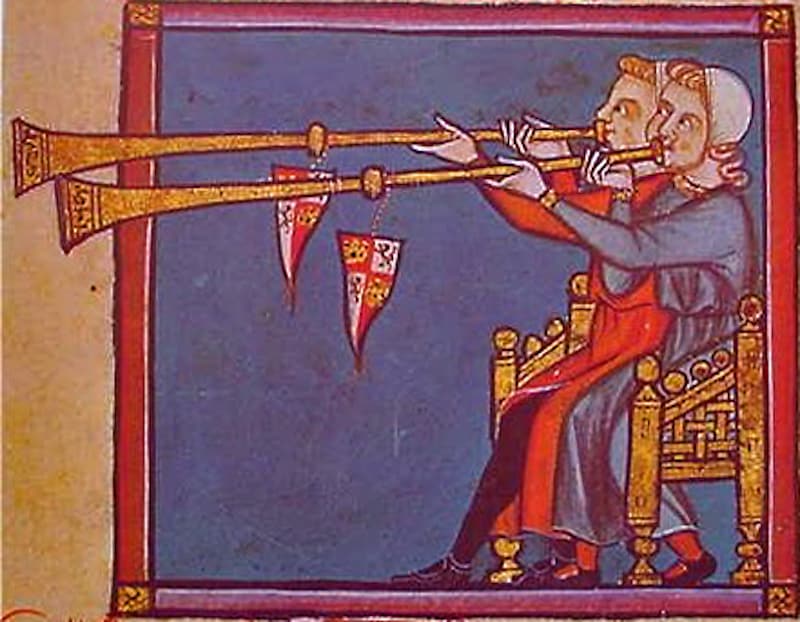
Early Trumpets did not have valves, so they could only play notes from the harmonic series.
They were used in pageants and fanfares, as well as in various military contexts, where their bright sound could convey messages across relatively large distances.
Also called Buisines, Medieval trumpets tended to be straighter and longer than their modern counterparts.
Sackbut
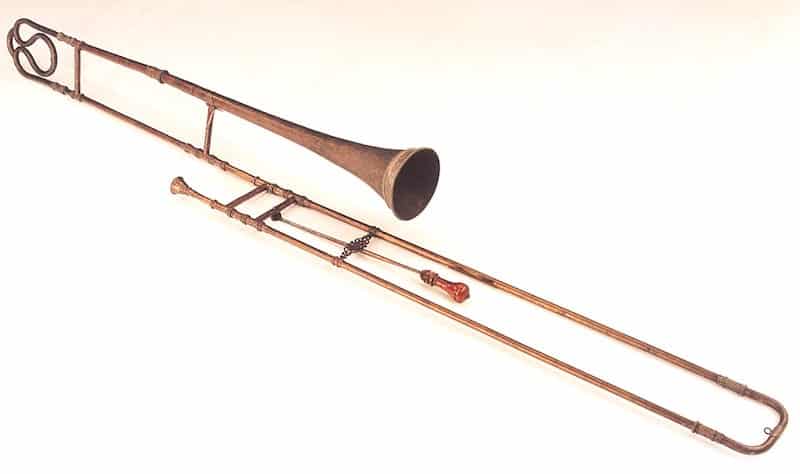
An early version of the trombone, the Sackbut’s pitch is altered via a telescopic slide.
It has a narrower bell than its modern counterpart.
Cornett
Not to be confused with the cornet (which is similar to the modern trumpet), the cornett or cornetto is a pipe-like instrument made from wood or ivory.
It has finger holes like a woodwind instrument, but a cup-style mouthpiece like other members of the brass family.
Medieval String Instruments
Lute
The Lute is a deep-bodied relative of the guitar that appears in various sizes.
During the Medieval period it would have been plucked with a quill (where modern players would use a plectrum) and its primary job would have been to provide improvised accompaniment for vocal music.
Gittern
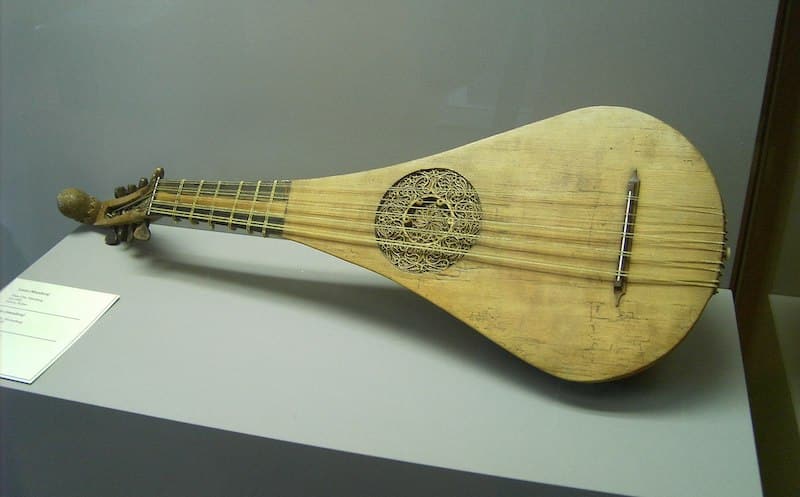
The Gittern is a relative of the lute and the modern guitar.
It has a smaller, pear-shaped body compared to the lute, and its neck and body are made from a single piece of wood.
Types of gittern include the Guitarra Latina (Latin guitar) and the Guitarra Morisca (Moorish guitar).
Dulcimer
A member of the zither family, the dulcimer sits flat across the player’s lap, where horizontal metallic strings are hit with a pair of little hammers.
Although the dulcimer disappeared from use in Western classical music, modern versions of the instrument are still used in types of American folk music.
The psaltery or psalterium is a relative of the dulcimer that would ultimately evolve into the harpsichord.
Harp
The harp was a favourite instrument of travelling minstrel and troubadour musicians in the Medieval period.
For the sake of portability, it would have been less than half the size of the modern pedal harp that we might see in an orchestra today.
Hurdy Gurdy

The Hurdy Gurdy is a rather strange-looking mechanical cousin of the violin.
Primarily used to create drones, a wooden wheel is turned by a crank, which causes the strings to play a continuous note.
Meanwhile melodies can be played on a small keyboard.
An early version was called the Organistrum.
Two people were required to play it: one to crank the wheel, and one to alter the pitches.
Viol (Viola da Gamba)
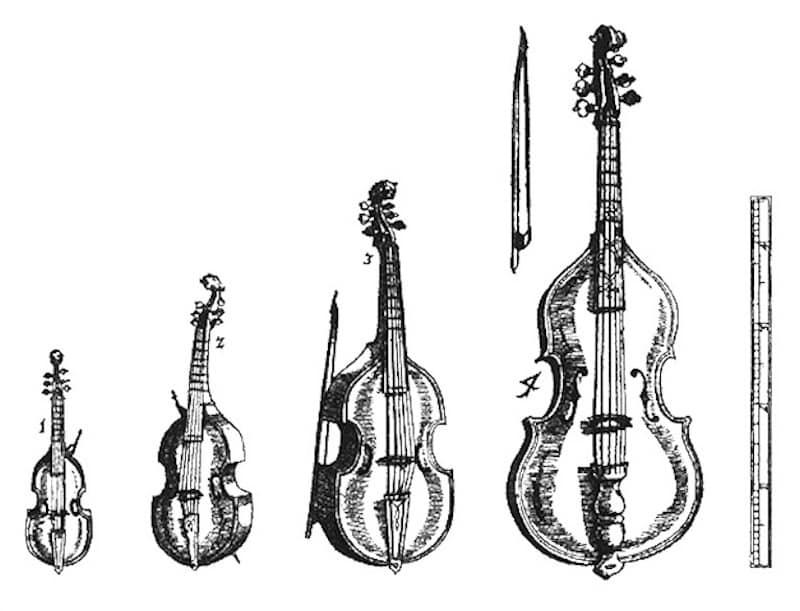
The Viol, which was also called the Viola da Gamba, was an instrument that appeared towards the end of the Medieval period.
A type of bowed string instrument, they come in various sizes, but the most common member of the family is held between the legs and looks similar to a cello, though it has a wider neck and more strings.
Rebec
The Rebec is an ancestor of the violin.
It has a narrow, boat-shaped body and is played with a bow on the arm or under the chin.
It is related to the Rebab, an ancient string instrument from North Africa and the Middle East.
Medieval Keyboard instruments
Pipe organs
The organ was one of the few instruments that were allowed in churches and cathedrals, where vocal music dominated.
The positive organ was a smaller, relatively portable type of pipe organ.
Portative organ
The portative organ is a bit like a miniature version of the church organ.
A portable instrument, it is strapped to the performer, who operates a pair of bellows, which puts wind through a set of pipes.
With the other hand, he or she plays pitches on a small keyboard.
Harpsichord
The harpsichord was invented in the late Medieval period.
A relative of the piano, its strings are plucked with a trigger mechanism when keys are pressed on the keyboard.
Medieval Percussion
Timbrel
This is essentially a tambourine: a wooden frame drum with jangles or bells round the edges.
Naker
Sometimes called naqareh, nakers are a small relative of the kettle drum (or timpani), which were brought back to Europe during the Crusades.
Tabor
A portable snare drum played either with one hand or two drumsticks.
Elsewhere, bells and cymbals are also commonly seen in Medieval paintings.
Wrapping up on Medieval Instruments
So, that concludes our guide to the instruments of the Medieval period.
We hope you’ve enjoyed finding out about some instruments which have close relatives that we still use today – like the flute and the sackbut – as well as learning about some weird and wonderful items – like the hurdy gurdy – that are a little less familiar!
